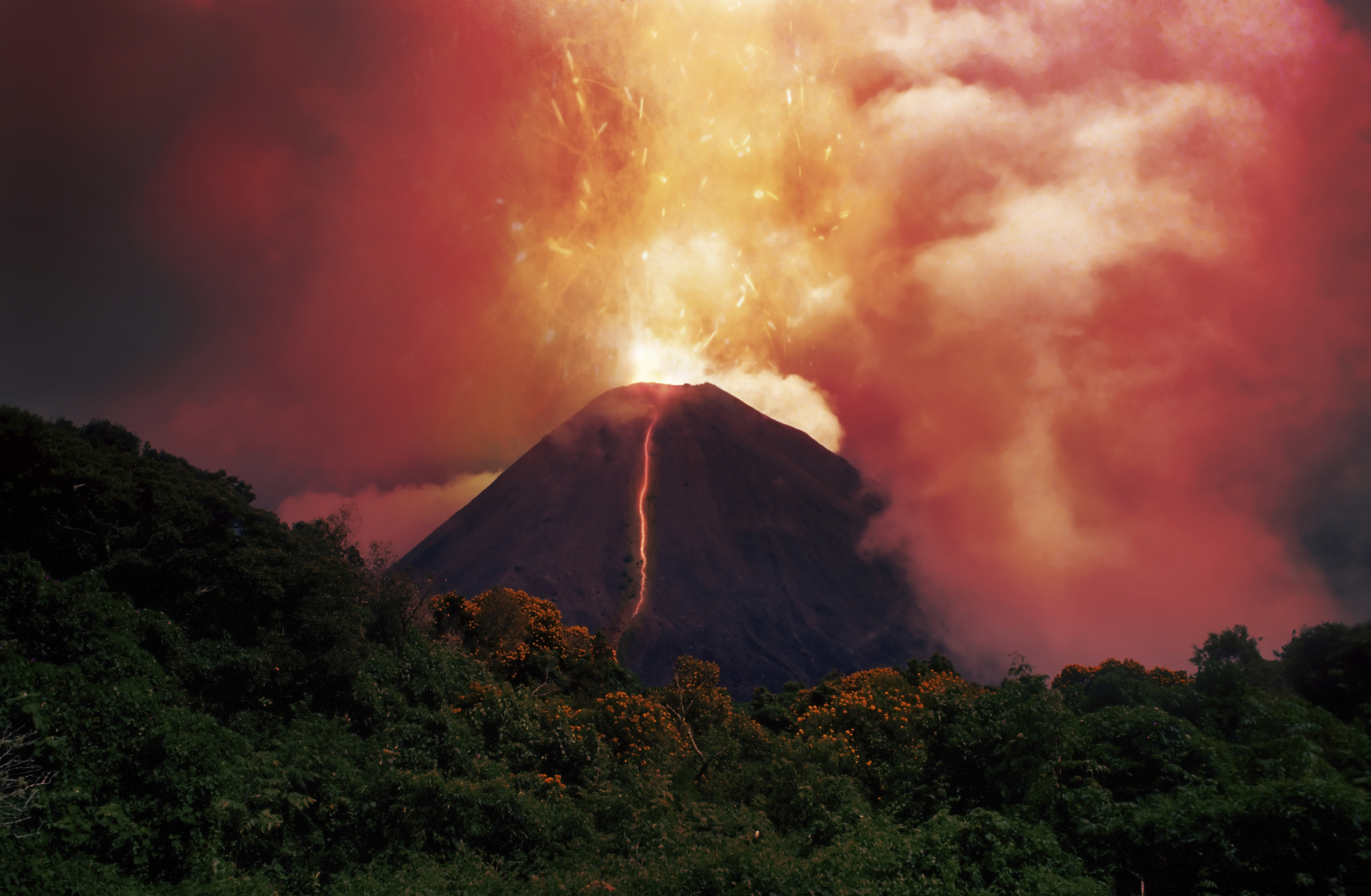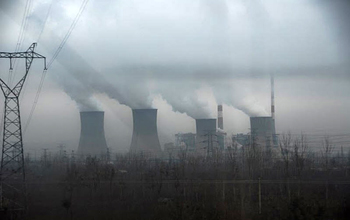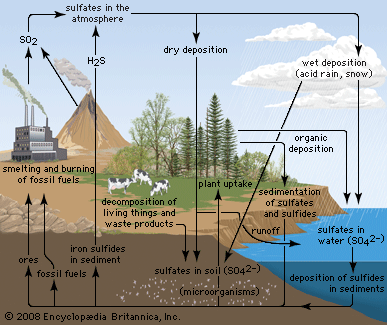Sulfur makes its way through the biosphere in many different ways. The majority of the earth's sulfur can be found in underground rocks and minerals. It is also found buried in ocean sediments. Through different processes, sulfur cycles over land and through the atmosphere.
Sulfur in the Atmosphere
Sulfur cycles through the atmosphere in different forms and from both natural and unnatural processes. Sulfur dioxide and hydrogen sulfide are both released into the atmosphere through the eruption of volcanoes. Hydrogen sulfide is also released by the breaking down of organic matter by decomposers in different environments. Sulfur also reaches the atmosphere from sea spray, forest fires, and dust storms in the form of ammonium sulfate. These are all natural occurances of sulfur.

Sulfur in Plants and Animals
When sulfur comes down to the earth from the atmosphere, it settles in soil. Plants then uptake this sulfur through their roots. Animals consume the plants, which is how sulfur travels through the food web. The animals that ate the sulfur filled plants eventually die and decay, passing the sulfur back into the soil to restart the cycle.
Unnatural Pathways of Sulfur
There are also unnatural processes that move sulfur through the environment. These are largely due to human activities. Sulfur is found in fossil fuels. Humans mine these resources and extract them from within the earth. When a fossil fuel such as coal is burned, the sulfur found inside is released into the air. Refining petrolium also does the same thing. As the sulfur reaches the atmosphere, it is converted in to sulfur dioxide. It then becomes droplets of sulfuric acid and sulfate, and falls to the earth as acid rain.

